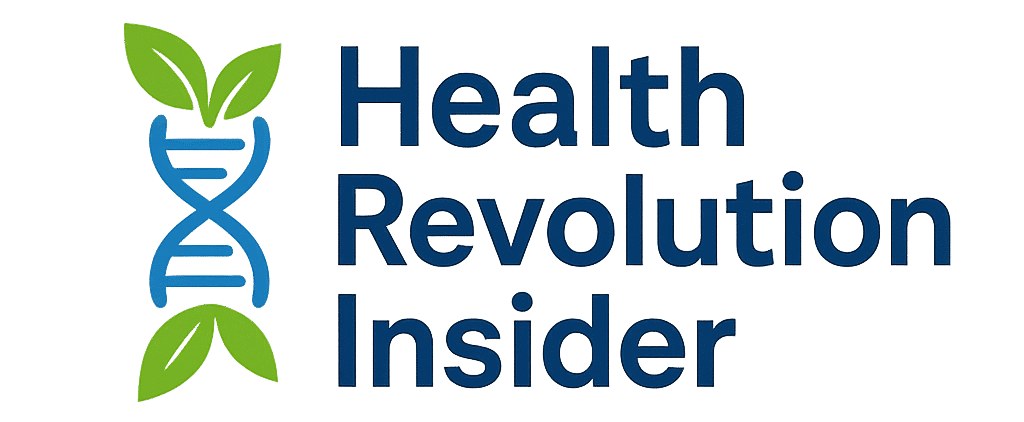In a world filled with industrial pollutants and environmental toxins, heavy metals have become a growing concern for our health. These toxic elements, including lead, mercury, cadmium, and arsenic, can accumulate in our bodies over time and lead to various health problems. Fortunately, heavy metal detoxification strategies have gained popularity as a means to combat this threat and promote overall well-being.
What are Heavy Metals?
Heavy metals are a group of metallic elements characterized by their high atomic weights and densities. These elements are naturally occurring and can be found in the Earth’s crust. Some of the most common heavy metals include lead, mercury, cadmium, arsenic, chromium, and nickel. These metals are categorized as heavy metals due to their density, which is significantly higher than that of lighter metals like iron or copper.
Sources of Heavy Metals:
- Natural Occurrence: Heavy metals can be found naturally in the Earth’s crust and can leach into soil and water. This natural presence can vary by geographic location.
- Industrial Activities: Human activities, such as mining, smelting, and manufacturing, release heavy metals into the environment. These processes can lead to contamination of soil, water, and air.
- Agricultural Practices: The use of heavy metal-containing fertilizers and pesticides in agriculture can contribute to soil contamination, potentially leading to heavy metals entering the food chain.
- Pollution: Heavy metals can be released into the environment through air pollution from sources like industrial emissions and vehicle exhaust. Rainwater can then wash these metals into bodies of water and soil.
Toxicity of Heavy Metals:
While some heavy metals are essential trace elements needed in small amounts for various biological functions, many heavy metals are toxic to humans and ecosystems even at low concentrations. Here are a few examples of the toxicity of some common heavy metals:
- Lead: Lead is a potent neurotoxin that can harm the nervous system, particularly in children. Exposure to lead can lead to cognitive impairment, developmental delays, and behavioral problems.
- Mercury: Mercury exists in various forms, with methylmercury being the most toxic. Consumption of fish contaminated with methylmercury can lead to neurological damage, especially in developing fetuses and infants.
- Cadmium: Cadmium exposure can damage the kidneys and bones and is associated with an increased risk of lung cancer.
- Arsenic: Chronic exposure to arsenic has been linked to skin, lung, bladder, and liver cancers. It can also cause skin lesions and other health issues.
Monitoring and Regulation:
To address the risks associated with heavy metals, governments and international organizations have established regulations and guidelines for acceptable levels of heavy metals in air, water, soil, and food. These regulations aim to protect human health and the environment by limiting exposure to harmful concentrations of heavy metals.
The Dangers of Heavy Metal Exposure
Neurological Problems
Lead Exposure: Lead is a notorious neurotoxin, especially harmful to children. Even low levels of lead exposure can lead to cognitive impairment, developmental delays, and behavioral problems. Severe lead poisoning can result in seizures, coma, and even death.
Mercury Exposure: Mercury, particularly in its methylmercury form, can damage the nervous system. Prenatal exposure to methylmercury through contaminated fish can lead to developmental delays, learning disabilities, and neurological problems in children.
Cardiovascular Issues
Cadmium Exposure: Cadmium exposure has been linked to an increased risk of high blood pressure, cardiovascular diseases, and stroke. Cadmium can accumulate in the walls of blood vessels, leading to inflammation and narrowing of the arteries.
Kidney Damage
Cadmium and Lead Exposure: Cadmium and lead are known to accumulate in the kidneys, where they can interfere with normal kidney function. Chronic exposure to these metals can lead to kidney dysfunction and, in severe cases, kidney failure.
Cancer
Arsenic Exposure: Arsenic is a known carcinogen and is associated with an increased risk of several types of cancer, including skin, lung, bladder, and liver cancer. Long-term exposure to arsenic, often through contaminated drinking water, can elevate cancer risks.
Cadmium Exposure: Cadmium is classified as a human carcinogen by various health organizations. Prolonged exposure to cadmium, such as through smoking or occupational exposure, can increase the risk of lung, prostate, and pancreatic cancer.
Gastrointestinal Problems
Lead Exposure: Lead exposure can cause abdominal pain, constipation, and digestive issues. It can also interfere with the absorption of essential nutrients like calcium and iron.
Reproductive and Developmental Issues
Lead Exposure: Lead exposure during pregnancy can harm fetal development and may lead to low birth weight, premature birth, and developmental delays.
Mercury Exposure: Mercury exposure in pregnant women can harm the developing fetus and lead to birth defects, including neurological problems.
Respiratory Problems
Cadmium Exposure Inhalation of cadmium fumes or dust can lead to acute lung injury and chronic obstructive pulmonary disease (COPD).
Psychological and Behavioral Effects
Lead Exposure: Lead exposure has been linked to behavioral problems, including hyperactivity and attention deficits in children. It can also contribute to mood disorders in adults.
Bone Health
Cadmium Exposure: Cadmium can accumulate in bones over time, leading to decreased bone density and an increased risk of fractures.
Other Health Effects
Chromium Exposure: Exposure to hexavalent chromium compounds can increase the risk of lung cancer, skin irritation, and lung infections.
Heavy Metal Detoxification
1. Dietary Changes:
- Incorporate Detoxifying Foods: Certain foods are known for their natural detoxifying properties. These include:
- Cilantro: Cilantro can help bind to heavy metals like mercury and lead, making it easier for the body to eliminate them.
- Garlic: Garlic contains sulfur compounds that support the body’s natural detoxification processes.
- Chlorella: Chlorella is a type of freshwater algae that may help bind to heavy metals and facilitate their removal.
- Antioxidant-Rich Diet: A diet rich in antioxidants from fruits and vegetables can help protect cells from oxidative damage caused by heavy metal exposure.
2. Supplements:
- N-acetylcysteine (NAC): NAC is a supplement that supports the body’s production of glutathione, a powerful antioxidant and detoxifier.
- Alpha-Lipoic Acid (ALA): ALA is an antioxidant that may help chelate heavy metals and reduce oxidative stress.
- Glutathione: Some individuals may benefit from glutathione supplements, which can enhance the body’s ability to detoxify heavy metals.
3. Chelation Therapy:
- Medical Chelation: Chelation therapy is a medical procedure that involves the administration of chelating agents like EDTA (ethylenediaminetetraacetic acid) or DMSA (dimercaptosuccinic acid). These agents bind to heavy metals in the bloodstream, allowing the body to excrete them through urine.
- Caution: Chelation therapy should only be administered under the supervision of a qualified healthcare professional. It is typically reserved for cases of acute heavy metal poisoning or when heavy metal levels are significantly elevated.
4. Sweating:
- Exercise: Regular physical activity can induce sweating, which is one way the body eliminates toxins, including heavy metals, through the skin.
- Saunas: Infrared saunas or traditional saunas can also promote sweating and aid in heavy metal detoxification. However, individuals should stay well-hydrated while using saunas to prevent dehydration.
5. Filtered Water:
- Water Filtration Systems: Investing in high-quality water filtration systems, such as reverse osmosis or activated carbon filters, can help reduce exposure to heavy metals in drinking water.
6. Avoidance:
- Identify and Reduce Exposure: It’s essential to identify potential sources of heavy metal exposure in your environment and take steps to minimize contact with them. For example, reduce the consumption of fish known to be high in mercury and be mindful of occupational hazards.
7. Medical Monitoring:
- Regular Check-ups: Routine medical check-ups can help monitor heavy metal levels in the body. If elevated levels are detected, healthcare professionals can provide guidance on appropriate detoxification measures.
8. Lifestyle Changes:
- Healthy Lifestyle: Adopting a generally healthy lifestyle, including a balanced diet, regular exercise, and stress management, can support the body’s natural detoxification processes.
Heavy metal detoxification is a complex process that involves various strategies to reduce the body’s burden of toxic heavy metals. It’s crucial to approach detoxification safely and consult with a healthcare professional before initiating any detox program, especially if you suspect heavy metal exposure. They can assess your specific situation and recommend appropriate measures to promote detoxification while ensuring your overall well-being.
Heavy metal detoxification is a vital aspect of maintaining good health in today’s polluted world. By adopting a combination of dietary changes, supplements, and lifestyle modifications, individuals can reduce their heavy metal burden and protect themselves from the serious health risks associated with heavy metal exposure.
It’s essential to consult with a healthcare professional before starting any detoxification program, as they can provide personalized guidance based on individual health needs.
Sources:
- National Institute of Environmental Health Sciences. “Heavy Metals.” https://www.niehs.nih.gov/health/topics/agents/heavy_metals/index.cfm
- Mayo Clinic. “Chelation Therapy.” https://www.mayoclinic.org/tests-procedures/chelation-therapy/about/pac-20393728
- Harvard Health Publishing. “Can detox diets really flush out toxins?” https://www.health.harvard.edu/staying-healthy/can-detox-diets-really-flush-out-toxins

